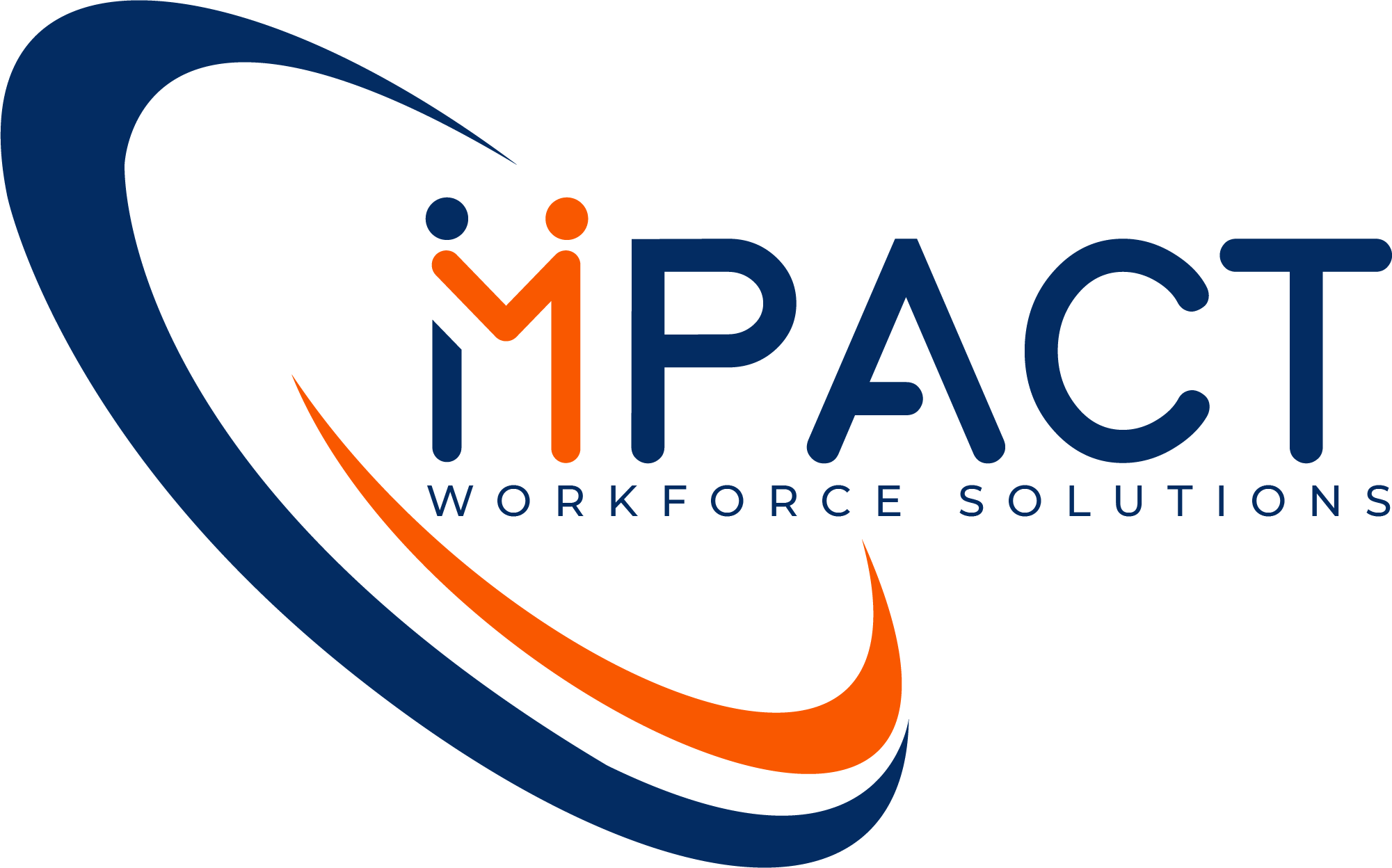
A Response to “Industrial firms rely on temp staffing but show little loyalty”
An examination of why 77% of industrial companies switch staffing providers and what it reveals about fundamental business model failures in the light industrial staffing industry
Table of Contents
Executive Summary
The recent Everee-ActivateStaff survey revealing that 77% of industrial companies have switched staffing providers treats client disloyalty as a service delivery problem. It is not. It is a systemic business model problem rooted in structurally incompatible expectations between clients and agencies. Source: staffingindustry.com
This white paper argues that loyalty in light industrial staffing cannot be created through better communication, faster fills, or technology adoption alone. Instead, loyalty requires:
- Strategic client qualification and segmentation
- Honest acknowledgment of the speed-quality paradox
- Contractual clarity about mutually exclusive service models
- The courage to walk away from clients whose expectations cannot be met

Part 1: The Paradoxes That Plague the Industry
Paradox #1: The Speed-Quality Impossibility
The survey data presents a fundamental contradiction:
- 61% of clients expect fills within 48 hours; 13% within 24 hours
- Yet “unreliable workers” is cited as a primary reason for switching providers
This is asking for magic. Quality candidates are employed or evaluating multiple opportunities. Workers available within 48 hours are available for a reason—they exist in the unemployed or underemployed talent pool. Proper vetting against a client’s unique culture, operational needs, and skill requirements requires time that clients refuse to provide.
Clients demanding 48-hour fills while complaining about reliability are creating the very problem they cite as justification for disloyalty. They are ordering fast food and rating it against fine dining standards.
Paradox #2: The Communication Two-Way Street
The survey identifies “poor communication” as a reason companies switch providers, implying agencies are at fault. The reality is more complex:
Agencies rarely receive meaningful feedback on candidate performance, cultural fit failures, or what constitutes success in the client’s environment. Without this data, agencies cannot improve matching algorithms, refine screening processes, or understand where they missed the mark. Failure becomes self-perpetuating.
When agencies do communicate proactively with status updates that don’t solve the client’s immediate need, such communication is viewed as noise rather than transparency. Yet when agencies treat clients as strategic partners requiring collaborative feedback loops, they are often met with transactional fast-food-window expectations.
You cannot achieve strategic partnership status when treated as a commodity vendor. The communication failure is bidirectional, but only agencies are penalized for it.
Paradox #3: The Pizza Shop Analogy
Consider two pizza models that both deliver consistency:
The National Chain (Commodity Model)
- Predictable product
- Fast delivery
- Low cost
- Acceptable quality
- Consistent mediocrity
The Family Pizzeria (Specialist Model)
- Exceptional product
- Slower preparation
- Higher cost
- Superior quality
- Consistent excellence
Both models work. Both generate loyalty within their market segment. The problem in staffing occurs when clients demand pizzeria quality at chain prices with chain speed.
You get what you pay for, and you pay for what you get. Consistency builds trust, but trust is earned through outcomes aligned with the service model. The chain pizza will be acceptable. The specialist pizza will be exceptional. Clients must choose which outcome matters more.

Part 2: Understanding Industry Dysfunction
The Comfortable Pain Syndrome
Perhaps the most damaging dynamic identified in the survey data is what we term Comfortable Pain—a chronic condition where both parties have adapted to perpetual failure:
The Client Side:
- Expects disappointment from staffing providers
- Over-orders by 30-40% anticipating failures
- Accepts chronic understaffing as operational reality
- Stops believing improvement is possible
- Treats all agencies as interchangeable commodities
The Agency Side:
- Never achieves contracted fill rates
- Accepts that failure is “part of the gig”
- Experiences failure fatigue across recruitment teams
- Suffers extreme recruiter turnover (often exceeding worker turnover)
- Cannot build institutional knowledge or improvement systems
This creates a doom loop: unrealistic expectations lead to inevitable failure, which reinforces low expectations, which enables continued poor performance, which justifies client disloyalty and agency mediocrity.
Even temporary win-lose or lose-win scenarios deteriorate into lose-lose. No loyalty is possible in this environment because neither party is positioned to succeed.
Why Technology Won’t Save You
The survey notes that 50% of leaders believe staffing firms not using AI risk appearing “out of date.” This is true but insufficient.
How you deploy technology matters more than whether you deploy it:
- Commodity firms use AI to optimize speed and volume fulfillment
- Specialist firms use AI to improve cultural matching and retention outcomes
If your client values speed foremost but demands reliability as essential, which technological approach serves them better? The survey doesn’t ask this question because it assumes all clients want the same thing. They do not.
AI cannot resolve the fundamental paradox of mutually exclusive client expectations. Technology amplifies your chosen strategy—it does not substitute for having one.
The True Value Proposition Challenge
The survey identifies that clients value temporary staffing for time savings, flexibility, cost reduction, and risk mitigation through temp-to-hire arrangements. But these stated benefits mask deeper operational realities:
If clients value quality over quantity:
- The value proposition is precision matching that produces retention
- Success requires longer placement timelines
- Fit-to-purpose pricing reflects the investment in vetting
- Turnover metrics target 15% monthly or lower
If clients value speed over stability:
- The value proposition is rapid volume fulfillment
- Success requires large talent pools and quick deployment systems
- Competitive pricing reflects the transactional nature
- Turnover metrics should be set at 40% monthly minimum
The temp-to-hire illusion: The survey cites temp-to-hire as a risk reduction benefit. Yet according to American Staffing Association data spanning two decades, the majority of temporary workers never reach the 90-day conversion milestone. This is not a staffing agency failure—it is a predictable outcome when speed-prioritized placement meets high-turnover operational environments.
Setting accurate expectations requires acknowledging these realities rather than selling aspirational outcomes that data shows are rare.

Part 3: A Better Framework
Strategic Client Qualification
The article’s underlying assumption is that all clients are worth serving and retaining. This is false. Not all clients are capable of loyalty because some client expectations are structurally impossible to meet.
Client Segmentation Model
The Speed-First Client
Profile:
- Demands 24-48 hour fills
- Operates high-volume, entry-level environments
- Experiences industry-typical turnover rates (40%+)
- Provides minimal feedback
- Views staffing as a commodity transaction
- Pays market or below-market rates
Agency Response:
- Set clear turnover expectations (40-50% monthly)
- Build rapid deployment systems and large talent pools
- Price for volume, not precision
- Accept this is a numbers game
- Measure recruiter success on speed and volume
- Do not apologize for outcomes that match the service model
The Quality-First Client
Profile:
- Accepts 5-7 day placement timelines for right-fit candidates
- Invests in onboarding, training, and culture
- Demonstrates below-industry turnover with direct hires
- Provides structured feedback at Day 1, Week 1, Month 1
- Views staffing as a strategic workforce solution
- Pays above-market rates for superior outcomes
Agency Response:
- Commit to turnover metrics of 15-20% monthly
- Invest in deep candidate vetting and cultural assessment
- Build true partnership feedback loops
- Price at fit-to-purpose reflecting the service investment
- Measure recruiter success on retention and conversion rates
- Position as a specialist, not a generalist
The Delusional Client
Profile:
- Demands 24-hour fills AND low turnover
- Expects premium results at commodity prices
- Blames agencies for their toxic workplace culture
- Provides no feedback yet expects continuous improvement
- Has churned through multiple providers in 12-24 months
Agency Response:
- Walk away or convert expectations to reality
- These clients generate the 77% switching statistic
- They are not profitable and drain resources from servable clients
- Loyalty is impossible because their expectations are impossible

Part 4: Implementation Strategies
The Contractual Clarity Solution
Rather than treating staffing arrangements as vague “we’ll try our best” agreements, structure contracts around honest expectations:
Speed-First Contract Language
“Agency commits to filling [X] of [Y] requisitions within 48 hours with candidates meeting basic qualifications outlined in position descriptions. Client acknowledges that rapid placement timelines limit cultural vetting depth. Based on industry data for similar speed-prioritized placements, anticipated turnover is 40-50% monthly. Agency will maintain replacement pipeline to backfill attrition within the same 48-hour timeframe.”
Quality-First Contract Language
“Agency commits to filling [X] of [Y] requisitions within 5-7 business days with candidates vetted for cultural fit, skill alignment, and retention indicators. Client commits to structured feedback at Day 1, Week 1, and Month 1 of each placement. Based on this collaborative approach and fit-to-purpose pricing model, targeted turnover is 15-20% monthly. Placements are optimized for 90-day temp-to-hire conversion success.”
Adaptive Language for Changing Circumstances
“If business conditions change requiring speed prioritization over quality outcomes, parties agree to renegotiate service level expectations and adjust turnover projections accordingly rather than maintain quality commitments under commodity timelines.”
This level of contractual honesty eliminates the comfortable pain syndrome by making expectations explicit and consequences predictable.
Addressing Agency-Side Failure Fatigue
The survey focuses on client dissatisfaction but ignores a critical operational reality: staffing agency recruiter turnover often exceeds temporary worker turnover.
When recruiters are measured on contradictory metrics (fill speed AND placement quality, high volume AND low turnover), they are set up for perpetual failure. Talented recruiters burn out and exit the industry, creating a doom loop:
- Inexperienced recruiters make poor placements
- Poor placements create client dissatisfaction
- Client dissatisfaction creates recruiter stress
- Recruiter burnout leads to turnover
- New inexperienced recruiters repeat the cycle
The solution requires internal metric alignment:
- Speed-focused agencies should measure recruiters on volume, fill speed, and replacement velocity
- Quality-focused agencies should measure recruiters on retention rates, conversion success, and client feedback scores
- Stop measuring both simultaneously unless pricing and client expectations support a hybrid premium model
Reducing recruiter turnover improves institutional knowledge, candidate relationship depth, and service consistency—all of which contribute to client loyalty.
The Uncomfortable Answer to “How Do We Create Loyalty?”
The survey and conventional industry wisdom assume the question is: “How do we create loyalty with our clients?”
The real question is: “Which clients are capable of loyalty, and how do we deserve it?”
Loyalty cannot be created with clients who:
- Maintain structurally impossible expectations
- Refuse to participate in feedback loops
- Demand premium outcomes at commodity prices
- Operate toxic cultures that burn through all workers regardless of source
- View staffing as an undifferentiated commodity service
These clients will always be part of the 77% who switch providers—not because agencies fail them, but because their expectations cannot be met by any provider in any sustainable way.

Part 5: The Path Forward
A New Model: Segmentation and Self-Selection
The path to loyalty requires fundamental strategic choices:
Step 1: Choose Your Lane
Are you a high-volume commodity player or a high-touch specialist?
Do not attempt to be both. The operational systems, pricing models, talent pools, recruiter skill sets, and client communication approaches are fundamentally different. Trying to serve both markets creates internal confusion and external mediocrity.
Step 2: Build Everything Around That Choice
Commodity Model:
- Large talent pools with rapid onboarding
- Automated screening for basic qualifications
- High-volume recruiter teams measured on speed
- Competitive pricing reflecting transactional nature
- Technology optimized for deployment velocity
- Honest turnover expectations set at contract initiation
Specialist Model:
- Curated talent pools with relationship-based recruiting
- Deep screening including cultural assessments
- Consultative recruiters measured on retention outcomes
- Fit-to-purpose pricing reflecting investment in precision
- Technology optimized for matching algorithms
- Collaborative feedback loops built into service delivery
Step 3: Qualify Clients as Rigorously as Candidates
Before taking on a client, diagnose:
- Their true priority: speed or quality?
- Their willingness to pay for their stated priority
- Their capacity to provide meaningful feedback
- Their internal turnover rates with direct hires (reveals culture)
- Their history with previous staffing providers (serial switchers are red flags)
If the client’s expectations don’t match your service model, decline the business or convert their expectations before contracting.
Step 4: Fire Unprofitable Clients
The client who:
- Demands both speed and quality but won’t pay for either
- Provides no feedback yet expects improvement
- Has churned through five agencies in two years
- Blames external vendors for internal cultural failures
This client is not worth having. They drain resources, demoralize recruiters, and prevent you from serving clients whose success you can actually deliver. The courage to walk away is the foundation of sustainable loyalty with the right clients.
Case Study: The Market Will Segment Itself
Consider two hypothetical staffing firms operating in the same metropolitan market:
RapidStaff Solutions (Commodity Model)
- Fills 85% of requisitions within 48 hours
- Maintains 45% monthly turnover
- Prices 15-20% below market average
- Serves 80 active clients
- Generates loyalty through reliable speed and rapid replacement
- Clients know exactly what they’re getting and value it
Precision Placement Partners (Specialist Model)
- Fills 90% of requisitions within 7 days
- Maintains 18% monthly turnover
- Prices 25-30% above market average
- Serves 25 active clients
- Generates loyalty through retention outcomes and conversion success
- Clients pay premium knowing their total cost-per-hire is lower
Both firms are successful. Both generate loyalty. Neither tries to serve the other’s clients.
The firms that fail are those trying to be both—promising RapidStaff speed at Precision Placement quality, or charging Precision prices while delivering RapidStaff outcomes.
Recommendations for Staffing Firms
Based on this analysis, we recommend the following strategic actions:
Immediate Actions (0-90 Days)
- Audit your current client portfolio by speed vs. quality expectations and profitability
- Identify which service model (commodity or specialist) your operations are actually built to deliver
- Develop client qualification criteria and train business development teams to decline poor-fit opportunities
- Create marketing materials that clearly position you in your chosen segment
- Measure client loyalty through retention rather than satisfaction surveys (satisfaction without renewal is meaningless)
Long-Term Strategic Actions (6-12 Months)
- Exit unprofitable client relationships that don’t align with your service model
- Build case studies demonstrating loyalty outcomes with right-fit clients
- Develop proprietary assessment tools that support your differentiation (speed systems or quality matching)
- Train clients on how to evaluate staffing partnerships beyond price and speed
- Create industry thought leadership around honest expectation-setting vs. overpromising
Conclusion: The Courage to Choose
The survey data showing 77% of companies switching staffing providers does not primarily reflect agency failure—it reflects an industry that has not made the strategic choice between fundamentally different business models.
Loyalty in light industrial staffing is not created through better communication, faster technology, or harder work alone. Loyalty is created through strategic alignment between client expectations and agency capabilities, supported by contractual honesty and the courage to serve only clients you can actually satisfy.
The uncomfortable truth the industry must face: You cannot be everything to everyone. The firms that will dominate the next decade are those willing to make a definitive choice, build their entire operation around it, and walk away from clients whose expectations they cannot meet.
Stop asking “How do we create loyalty?” Start asking “Which clients deserve our loyalty, and what must we become to deserve theirs?”
The market is ready to segment. The question is whether your firm has the strategic clarity and operational courage to choose your position within it.
